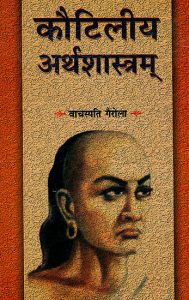In India, the system of direct taxation as it is known today, has been in force in one form or another even from ancient times. There are references both in Manu Smriti and Arthasastra to a variety of tax measures. Manu, the ancient sage and law-giver stated that the king could levy taxes, according to Sastras. The wise sage advised that taxes should be related to the income and expenditure of the subject.
According to him, the king should arrange the collection of taxes in such a manner that the subjects did not feel the pinch of paying taxes. He laid down that traders and artisans should pay 1/5th of their profits in silver and gold, while the agriculturists were to pay 1/6th, 1/8th and 1/10th of their produce depending upon their circumstances.
The detailed analysis given by Manu on the subject clearly shows the existence of a well-planned taxation system, even in ancient times. Not only this, taxes were also levied on various classes of people like actors, dancers, singers and even dancing girls. Taxes were paid in the shape of gold-coins, cattle, grains, raw-materials and also by rendering personal service.
However, it is Kautilya’s Arthasastra, which deals with the system of taxation in a real elaborate and planned manner. This well known treatise on state crafts written sometime in 300 B.C.
Collection of Income-tax was well organised and it constituted a major part of the revenue of the State. A big portion was collected in the form of income-tax from dancers, musicians, actors and dancing girls, etc. This taxation was not progressive but proportional to the fluctuating income.
General Sales-tax was also levied on sales and the sale and the purchase of buildings was also subject to tax. Even gambling operations were centralised and tax was collected on these operations. A tax called yatravetana was levied on pilgrims. Though revenues were collected from all possible sources, the underlying philosophy was not to exploit or over-tax people but to provide them as well as to the State and the King, immunity from external and internal danger. The revenues collected in this manner were spent on social services such as laying of roads, setting up of educational institutions, setting up of new villages and such other activities beneficial to the community.
it can be said without fear of contradiction that Kautilya’s Arthasastra was the first authoritative text on public finance, administration and the fiscal laws in this country. His concept of tax revenue and the on-tax revenue was a unique contribution in the field of tax administration. It was he, who gave the tax revenues its due importance in the running of the State and its far-reaching contribution to the prosperity and stability of the Empire. It is truly an unique treatise. It lays down in precise terms the art of state craft including economic and financial administration.

Leave a Reply